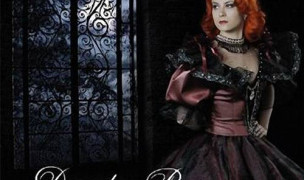 10 Terms
10 TermsHome > Terms > English (EN) > children and television
children and television
The domestic intrusion of television in postwar America included children in the television experience, often via anodyne programming entertaining anyone between the ages of three and eighty. Whether including a chimpanzee in morning television news or avoiding sexuality in prime time, television admitted children to “family viewing” even as it defined them as specific audiences. At the same time, non-children’s television has been viewed with suspicion in terms of its impact on the innocent young whom it “pushes” towards crime, drugs or sex. Yet, apart from such general relationships between children and television, which continue to produce widespread outcry and inconclusive studies, programming, both local and national, also has specifically targeted children.
Here, a profound duality of learning versus consumption has been contentious even while the spectrum of shows available on networks, public stations and cable channels like Nickelodeon or FOX Family has expanded continually Together, both cultural issues and programming have influenced what children are in contemporary America.
Early children’s shows on television used live actors, puppets and cartoons to capture their audience. Network shows included Howdy Doody (NBC, 1947–60), with fanciful, long-running characters and a child-filled peanut gallery and Captain Kangaroo (CBS, 1955–84) and his familiar friends. Local shows featuring “T-Bar-V” ranch (in Louisville), “Mayor Art” (San Francisco, CA) or comedian Soupy Sales (New York City) showcased children as real participants as well; the ambience of these shows is captured ironically in Krusty the Clown in The Simpsons. Elements like warm, longrunning characters in a home-like setting, multiple stories and forms of narrative and live children have continued in shows as diverse as Peewee’s Playhouse, Barney and Mr Roger’s Neighborhood.
Disney represents a special early and continuing chapter in children’s television, from Disneyland (ABC, 1954–8) to The Wonderful World of Disney on the same network that it now owns at the end of the century As David Bianculli observes, this essentially makes it not only the longest running weekly series in history but also the longest running infomercial. The show has invariably highlighted Disney theme parks, trademark characters, massmedia products or some other aspect of corporate development. Here, the child is less consumer than pawn. In the 1960s, Disney’s Wonderful World of Color pushed color television for NBC’s parent company General Electric. In the 1990s, Disney also created its own premium channel as well as its merger/return to ABC.
Despite Disney’s domination of animation, others also produced and packaged cartoon shows for children. Warner Brothers, for example, built anthologies around their theatrical, animated characters like Daffy Duck or Road Runner. William Hanna and Joseph Barbera produced Huckleberry Hound (1958–61) and QuickDraw McGraw (1950–61) which translated sitcom plots and movie scenarios like westerns into children’s vaudeville, embodied in quick-talking bears (Yogi), plodding lawmen (Huckleberry Hound and Quickdraw McGraw) and less elaborate drawing. These cartoons roamed local stations for years in syndicated releases. Other animated shows appeared in evening hours, like the Flintstones (ABC, 1960–6), which aped the adult Honeymooners.
Saturday morning as a cartoon kingdom began to emerge in the 1960s as series by Hanna-Barbera, Sid and Marty Krofft and others glued children to the set between eight and noon. As Timothy and Kevin Burke (1999) note, Saturday morning became a magnet, drawing animated series out of prime time as well as fostering new opportunities for decades, ranging from talented animals to superheroes and varying in plot and quality of animation. The 1960s also spawned ironic forebears of later hip animated comedy like Jay Ward’s Rocky and His Friends (ABC, 1959–61 and sequels) or George of the Jungle.
While leavened with limp network educational series, Saturday morning also became a stronghold for targeted programming and advertising that provided product placements and vocabularies of life for Generation X. Shows and commercials sold millions of toys and boxes of breakfast cereals, while transmitting ideas ranging from victories of good and sharing over evil, or masculine domination where superheroes were invariably white.
While rules controlling such commercials were in place in the late 1960s, these were totally eliminated in 1983.
Because of commercialism as much as quality Saturday morning galvanized attacks on consumerist television. Federal Communications Commissioner Newton Minow—famed for his description of television as a “vast wasteland”—and the later Action for Children’s Television, begun in 1968, sought to control both content and relationships between advertising and programming (e.g. Flintstones’ vitamins or other spin-offs).
ACT’s strategies, however, faced shifting regulation—while Jimmy Carter was interventionist to the point of considering a ban on advertisements, Ronald Reagan eliminated controls instead. Debate over the impact of violence also ensued, although network censors generally monitored content for children’s shows.
In 1991 the Children’s Television Act required broadcasters to certify educational content. Meanwhile, the V-chip promises home regulatory control over what children see (within the limits of what is offered). At the same time, alternative home programming has been cultivated with video sales and rentals.
Unlike these commercial offerings, educational television on PBS offered a vision of the child ready to learn. They attracted children not with dull lessons, but with the incredible invention of Sesame Street (PBS, 1969–) and spin-offs through Jane Cooney and the Children’s Television Workshop. After thirty years, Sesame Street has become American folk culture as well as mass culture. It is also the most widely viewed children’s television show worldwide. Other PBS landmarks include Reading Rainbow, Where in the World is Carmen Sandiego? (combining game show and geography), Mr Roger’s Neighborhood (whose white neighborliness was satirized by Eddie Murphy on Saturday Nïght Live) and Electric Company. PBS later expanded its offerings to younger children with Barney—a giant dinosaur more annoying to many adults than the cynical Muppets—and the imported Teletubbies, targeting very young children.
The educational philosophy of PBS has been challenged by critics who decry the short attention span demanded by Sesame Street and the association of education and fun that may undercut expectations for school. More recently concerns have been voiced that these learners are also being asked to consume. Sesame Street, Arthur, Teletubbies, Barney and other series offer games, toys, traveling shows and even theme parks that go beyond any formative/ educational mission. While royalties replace government cutbacks in public media financing, these blur lines between learners and consumers.
In the 1990s, relations between children and television have intensified via multiple new options, including cable channels aimed at children (Disney, Nickelodeon) and/or inclusive of kids (FOX Family: Nick at Night). Video series allow home libraries and constant reviewing of treasured stories or episodes that change viewing patterns but also create new dependencies as children memorize scripts as well as characters. Television also crosses over into classrooms, especially preschool, where video screenings seem more acceptable. Commercial channels have also sought entry to the classroom as learning tools with paid advertisements to the alarm of parents and teachers.
Through this complicated history conflicting images of children have emerged. Are they simply to be entertained passively (television as babysitter)? If educable, should the lessons be generally social (sharing is good), disciplinary (counting and spelling) or more complex (multiculturalism or Spanish on Sesame Street)? Are children innocent—to be spared complications of crime, family dysfunction, consumption or other problems facing them in the real world? Or should children’s television talk about death and loss? These questions, writ large in children’s exposure to adult television, prove complicated even within children’s self-help programs like Mr Roger’s Neighborhood.
Moreover, how can we conceive of children as active, even resistant viewers, skating on the ironic edge of cartoons like Rocky and Bullwinkle through South Park and The Simpsons (which some families will not let children watch)? M. Davis’ Fake, Fact and Fantasy (1997) explores children’s abilities to distinguish between television violence and real life as learning skills. As with other mass media, series and audiences are elements in the process of the formation of American culture rather than simple lessons or symbols.
- Part of Speech: noun
- Synonym(s):
- Blossary:
- Industry/Domain: Culture
- Category: American culture
- Company: Routledge
- Product:
- Acronym-Abbreviation:
Other Languages:
Member comments
Terms in the News
Billy Morgan
Sports; Snowboarding
The British snowboarder Billy Morgan has landed the sport’s first ever 1800 quadruple cork. The rider, who represented Great Britain in the 2014 Winter Olympics in Sochi, was in Livigno, Italy, when he achieved the man-oeuvre. It involves flipping four times, while body also spins with five complete rotations on a sideways or downward-facing axis. The trick ...
Marzieh Afkham
Broadcasting & receiving; News
Marzieh Afkham, who is the country’s first foreign ministry spokeswoman, will head a mission in east Asia, the state news agency reported. It is not clear to which country she will be posted as her appointment has yet to be announced officially. Afkham will only be the second female ambassador Iran has had. Under the last shah’s rule, Mehrangiz Dolatshahi, a ...
Weekly Packet
Language; Online services; Slang; Internet
Weekly Packet or "Paquete Semanal" as it is known in Cuba is a term used by Cubans to describe the information that is gathered from the internet outside of Cuba and saved onto hard drives to be transported into Cuba itself. Weekly Packets are then sold to Cuban's without internet access, allowing them to obtain information just days - and sometimes hours - after it ...
Asian Infrastructure Investment Bank (AIIB)
Banking; Investment banking
The Asian Infrastructure Investment Bank (AIIB) is an international financial institution established to address the need in Asia for infrastructure development. According to the Asian Development Bank, Asia needs $800 billion each year for roads, ports, power plants or other infrastructure projects before 2020. Originally proposed by China in 2013, a signing ...
Spartan
Online services; Internet
Spartan is the codename given to the new Microsoft Windows 10 browser that will replace Microsoft Windows Internet Explorer. The new browser will be built from the ground up and disregard any code from the IE platform. It has a new rendering engine that is built to be compatible with how the web is written today. The name Spartan is named after the ...
Featured Terms
Peter Gade
Peter Gade is one of best European player in the Badminton. Peter Gade is looking to develop the performance in the upcoming year but his current ...
Contributor
Featured blossaries
Bagar
0
Terms
64
Blossaries
6
Followers
Dark Princess - Without You
 10 Terms
10 Terms
marija.horvat
0
Terms
21
Blossaries
2
Followers
"Belupo" pharmaceutical company
 23 Terms
23 TermsBrowers Terms By Category
- SSL certificates(48)
- Wireless telecommunications(3)
Wireless technologies(51) Terms
- Legal documentation(5)
- Technical publications(1)
- Marketing documentation(1)
Documentation(7) Terms
- Wine bottles(1)
- Soft drink bottles(1)
- Beer bottles(1)



